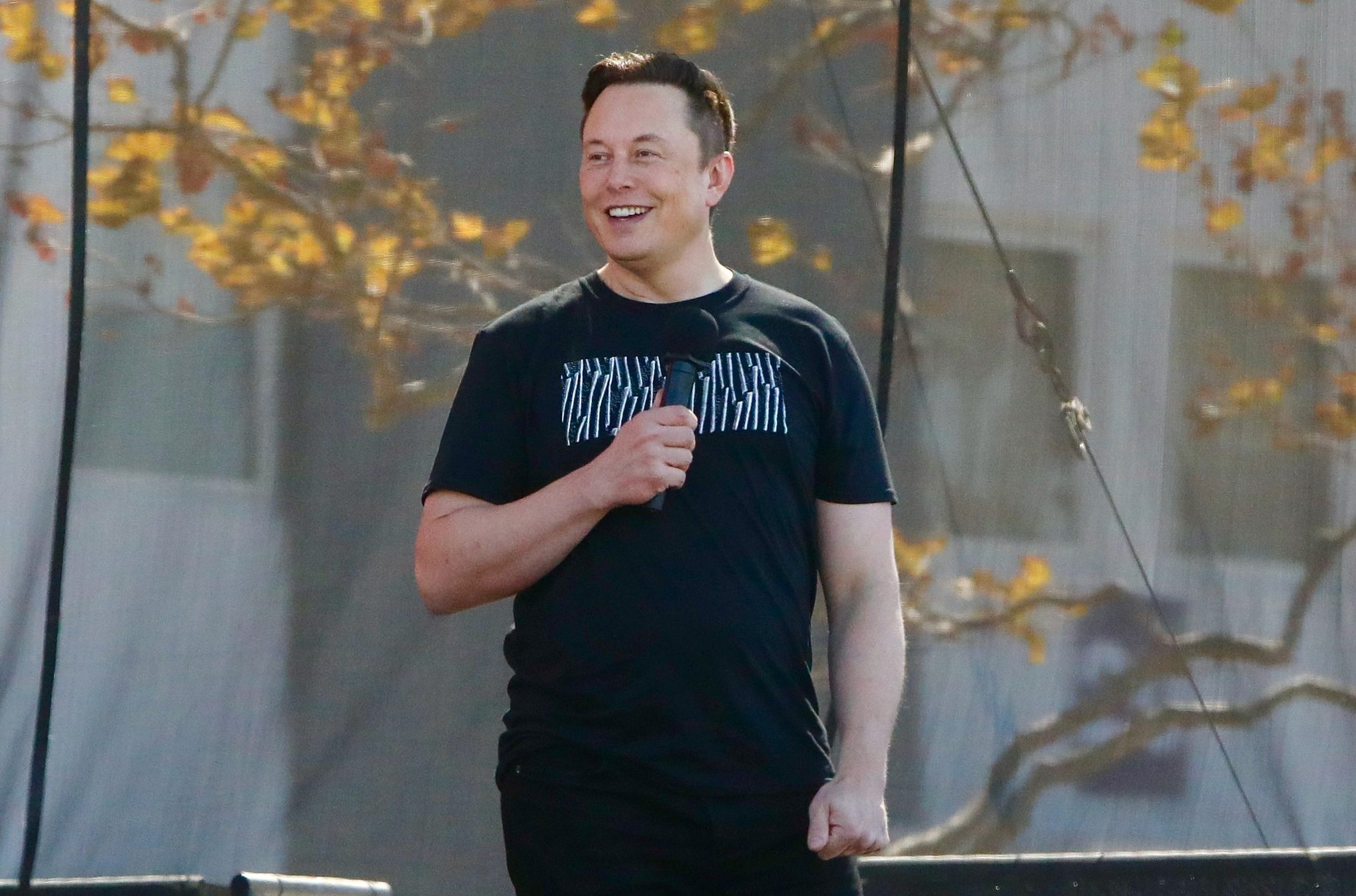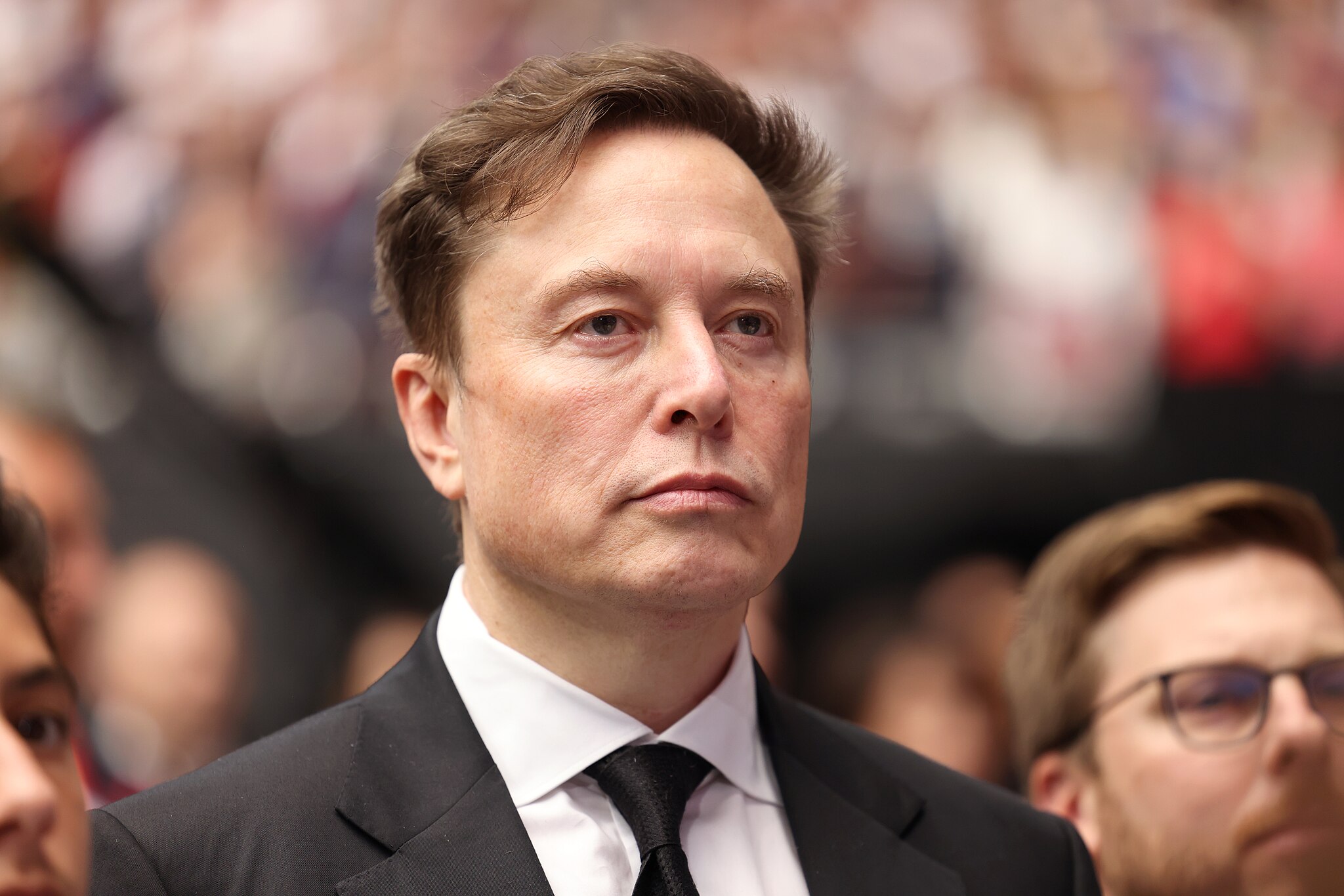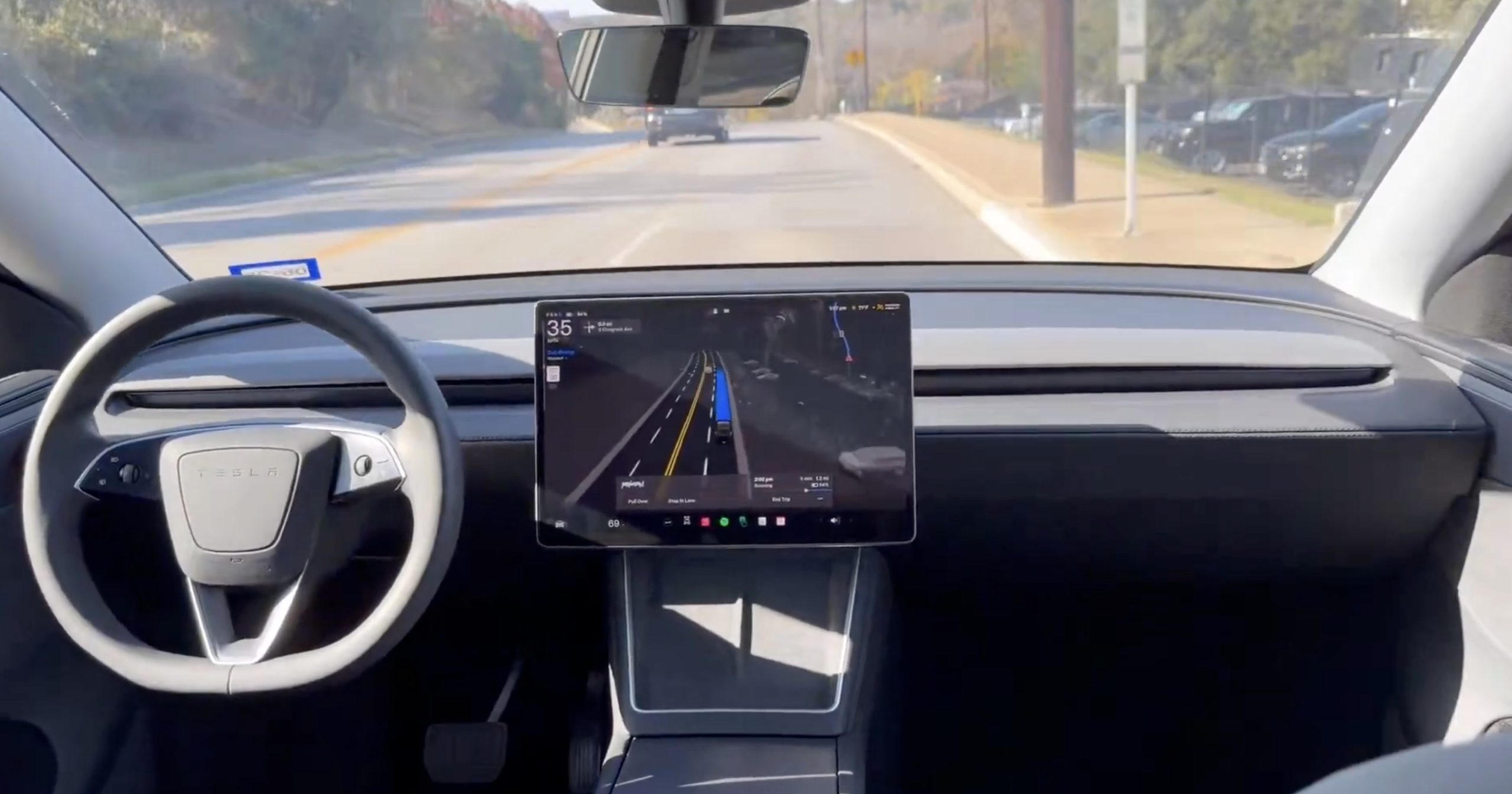Elon Musk
Elon Musk just revealed more about Tesla’s June Robotaxi launch
Tesla CEO Elon Musk gave more information about the Robotaxi launch in Austin set for June.

Tesla CEO Elon Musk just revealed more details about the company’s June Robotaxi launch, which will kick off in Austin.
As of right now, Tesla is still set to push out the first Robotaxi rides in Austin, Texas, in early June. These vehicles will be in short supply at first, as Musk says the company is purposely rolling out the fleet in a slow and controlled fashion to prioritize safety. There will be ten vehicles in the Robotaxi fleet to start.
Tesla Robotaxi deemed a total failure by media — even though it hasn’t been released
However, in an interview with CNBC on Tuesday afternoon, Musk also revealed some other new details, including where in Austin the vehicles will be able to go, how many Robotaxis we could see on public roads within a few months, and other information regarding Tesla’s Full Self-Driving suite.
A Controlled Rollout
Tesla has maintained for a few months now that the Robotaxi fleet will be comprised of between 10 and 20 Model Y vehicles in Austin.
The Cybercab, which was unveiled by the company last October, will not be available initially, as those cars will likely be produced in 2026.
Musk said during the CNBC interview that Tesla is doing a low-yield trial at first to initiate a safety-first mentality. It is important for Tesla to launch the Robotaxi fleet in a small manner to keep things in check, at least at first.
As confidence builds and the accuracy of the fleet is ensured, more vehicles will be added to the fleet.
Musk believes there will be 1,000 Robotaxis on the road “in a few months.”
Geofenced to Certain Austin Areas
Tesla will be launching the Robotaxi program in a geofenced fashion that gives the company the ability to control where it goes. Musk says that the areas the Robotaxis will be able to travel to are among the safest neighborhoods and areas in Austin.
This is yet another safety protocol that will ensure the initial riders are not put in dangerous neighborhoods.
Some might be disappointed to hear this because of Tesla’s spoken confidence regarding Robotaxi, but the initial rollout does need to be controlled for safety reasons. An accident or incident of any kind that would put riders’ lives in danger would be catastrophic.
No Driver, No Problem
As the company has rolled out an employee-only version of the Robotaxi program in Austin and the San Francisco Bay Area, some wondered whether the rides would be driverless, as these initial trials for Tesla workers were not. Employee rides featured a human in the driver’s seat to ensure safety.
Tesla says it has launched ride-hailing Robotaxi teaser to employees only
The company did not report whether there were any interventions or not, but it did state that the vehicles traveled over 15,000 miles through 1,500 trips.
Musk confirmed during the interview that there will be no driver in the vehicle when the Robotaxi program launches in June. This will be groundbreaking as it will be the first time that Tesla vehicles will operate on public roads without anyone in the driver’s seat.
Full Self-Driving Licensing
For more than a year, Tesla has indicated that it is in talks with another major automaker regarding the licensing of Full Self-Driving. Many speculated that the company was Ford, but neither it nor Tesla confirmed this.
Musk said today that Tesla has been in touch with “a number of automakers” that have inquired about licensing FSD. Tesla has yet to sign any deal to do so.
Here is the full interview with @elonmusk talking about Tesla and the Cybercab! pic.twitter.com/992njb0lPS
— Robin (@xdNiBoR) May 20, 2025

Elon Musk
Tesla’s Elon Musk accepts invitation to Israel’s Smart Transportation Conference
The announcement was shared by the Israeli Prime Minister in a post on social media platform X.

Elon Musk has reportedly accepted an invitation from Israeli Prime Minister Benjamin Netanyahu to participate in the country’s Smart Transportation Conference in March 2026.
The announcement was shared by the Israeli Prime Minister in a post on social media platform X.
A call and an invitation
Netanyahu posted on X about Musk, stating in Hebrew: “Last night, I held a joint conference call from Florida with entrepreneur Elon Musk, Minister of Transportation Miri Regev, and the head of the National AI Headquarters, Erez Askal. In the framework of the conversation, Musk responded to my invitation and Minister Regev’s invitation to participate in the Smart Transportation Conference that will be held in March.”
Netanyahu added that he and Musk discussed continuing initiatives such as the promotion of autonomous vehicle laws and the boosting of AI technologies in Israel. This, according to the Prime Minister, is aimed at making the country a global leader in emerging technologies.
“Additionally, we discussed the continuation of collaborations with Tesla and the promotion of the law pertaining to autonomous vehicles. I spoke at length with Musk about promoting and developing artificial intelligence technologies in Israel, and I said in our conversation: We intend to catapult Israel and turn it into a global leader in the field, just as we did in cyber and other technologies,” Netanyahu added.
Tesla FSD’s upcoming rollout in Israel
Elon Musk’s upcoming conference appearance in Israel could hint at Tesla’s upcoming rollout of FSD and its Robotaxi service in the country. Previous reports have hinted that FSD is nearing regulatory approval in Israel, following strong advocacy from local owners and direct intervention from the government.
Nearly 1,000 Tesla drivers petitioned authorities, highlighting FSD’s potential to enhance road safety. Transport and Road Safety Minister Miri Regev responded positively on X, writing “I’ve received the many referrals from Tesla drivers in Israel! Tesla drivers? Soon you won’t need to hold the steering wheel.”
Minister Regev has instructed the ministry’s Director-General to accelerate the approval process, including necessary tests. A dedicated working group, led by Moshe Ben-Zaken, is also coordinating with regulatory and safety agencies to meet international standards.
Elon Musk
Elon Musk and Tesla AI Director share insights after empty driver seat Robotaxi rides
The executives’ unoccupied tests hint at the rapid progress of Tesla’s unsupervised Robotaxi efforts.

Tesla CEO Elon Musk and AI Director Ashok Elluswamy celebrated Christmas Eve by sharing personal experiences with Robotaxi vehicles that had no safety monitor or occupant in the driver’s seat. Musk described the system’s “perfect driving” around Austin, while Elluswamy posted video from the back seat, calling it “an amazing experience.”
The executives’ unoccupied tests hint at the rapid progress of Tesla’s unsupervised Robotaxi efforts.
Elon and Ashok’s firsthand Robotaxi insights
Prior to Musk and the Tesla AI Director’s posts, sightings of unmanned Teslas navigating public roads were widely shared on social media. One such vehicle was spotted in Austin, Texas, which Elon Musk acknowleged by stating that “Testing is underway with no occupants in the car.”
Based on his Christmas Eve post, Musk seemed to have tested an unmanned Tesla himself. “A Tesla with no safety monitor in the car and me sitting in the passenger seat took me all around Austin on Sunday with perfect driving,” Musk wrote in his post.
Elluswamy responded with a 2-minute video showing himself in the rear of an unmanned Tesla. The video featured the vehicle’s empty front seats, as well as its smooth handling through real-world traffic. He captioned his video with the words, “It’s an amazing experience!”
Towards Unsupervised operations
During an xAI Hackathon earlier this month, Elon Musk mentioned that Tesla owed be removing Safety Monitors from its Robotaxis in Austin in just three weeks. “Unsupervised is pretty much solved at this point. So there will be Tesla Robotaxis operating in Austin with no one in them. Not even anyone in the passenger seat in about three weeks,” he said. Musk echoed similar estimates at the 2025 Annual Shareholder Meeting and the Q3 2025 earnings call.
Considering the insights that were posted Musk and Elluswamy, it does appear that Tesla is working hard towards operating its Robotaxis with no safety monitors. This is quite impressive considering that the service was launched just earlier this year.
Elon Musk
Starlink passes 9 million active customers just weeks after hitting 8 million
The milestone highlights the accelerating growth of Starlink, which has now been adding over 20,000 new users per day.

SpaceX’s Starlink satellite internet service has continued its rapid global expansion, surpassing 9 million active customers just weeks after crossing the 8 million mark.
The milestone highlights the accelerating growth of Starlink, which has now been adding over 20,000 new users per day.
9 million customers
In a post on X, SpaceX stated that Starlink now serves over 9 million active users across 155 countries, territories, and markets. The company reached 8 million customers in early November, meaning it added roughly 1 million subscribers in under seven weeks, or about 21,275 new users on average per day.
“Starlink is connecting more than 9M active customers with high-speed internet across 155 countries, territories, and many other markets,” Starlink wrote in a post on its official X account. SpaceX President Gwynne Shotwell also celebrated the milestone on X. “A huge thank you to all of our customers and congrats to the Starlink team for such an incredible product,” she wrote.
That growth rate reflects both rising demand for broadband in underserved regions and Starlink’s expanding satellite constellation, which now includes more than 9,000 low-Earth-orbit satellites designed to deliver high-speed, low-latency internet worldwide.
Starlink’s momentum
Starlink’s momentum has been building up. SpaceX reported 4.6 million Starlink customers in December 2024, followed by 7 million by August 2025, and 8 million customers in November. Independent data also suggests Starlink usage is rising sharply, with Cloudflare reporting that global web traffic from Starlink users more than doubled in 2025, as noted in an Insider report.
Starlink’s momentum is increasingly tied to SpaceX’s broader financial outlook. Elon Musk has said the satellite network is “by far” the company’s largest revenue driver, and reports suggest SpaceX may be positioning itself for an initial public offering as soon as next year, with valuations estimated as high as $1.5 trillion. Musk has also suggested in the past that Starlink could have its own IPO in the future.








